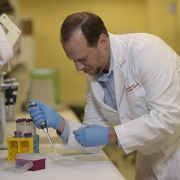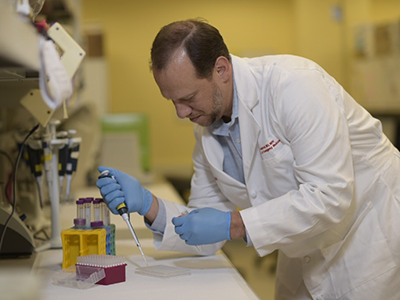Improving glycemic control in diabetic children

A 10-week pilot study at Children’s National Health System integrated weekly caregiver coaching, personalized glucose monitoring and incentives into standard treatment for 25 pediatric patients with type 1 diabetes, lowering A1c by .5%
The life of a type 1 diabetes patient – taking daily insulin shots or wearing an insulin pump, monitoring blood sugar, prioritizing healthful food choices and fitting in daily exercise – can be challenging at age 5 or 15, especially as holidays, field trips and sleepovers can disrupt diabetes care routines, creating challenges with compliance. This is why endocrinologists from Children’s National Health System experimented with using health coaches over a 10-week period to help families navigate care for children with type 1 diabetes.
By assembling a team of diabetes educators, dietitians, social workers, psychologists and health care providers, Fran Cogen, M.D., C.D.E., director of diabetes care at Children’s National, helped pediatric patients with type 1 diabetes manage their glycemic status, or blood-sugar control.
On Saturday, June 8, 2019, Dr. Cogen will share results of the pilot program as poster 1260-P, entitled “A Clinical Care Improvement Pilot Program: Individualized Health Coaching and Use of Incentives for Youth with Type 1 Diabetes and their Caregivers,” at the American Diabetes Association’s 79th Scientific Sessions, which takes place June 7-11 at the Moscone Center in San Francisco.
Dr. Cogen’s study was offered at no cost to caregivers of 179 patients at Children’s National seeking treatment for type 1 diabetes. The pilot program included two components: 1) Weekly phone calls or emails from a health coach to a caregiver with personalized insulin adjustments, based on patient blood sugars submitted through continuous glucose monitoring apps; and 2) Incentives for patients to participate in the program and reach health targets.
Twenty-five participants, ages 4-18, with a mean age of 11.6 and A1c ranges between 8.6 – 10% joined the study. The average A1c was 9.4% at the beginning of the program and dropped by an average of .5% at the end of the trial. Twenty of the 25 participants, 80%, improved A1c levels by .5%. Seventeen participants, 68%, improved A1c levels by more than .5%, while seven participants, 28%, improved A1c levels by more than 1%.
“Chronic disease is like a marathon,” says Dr. Cogen. “You need to have constant reinforcement and coaching to get people to do their best. Sometimes what drives people is to have people on the other end say, ‘Keep it up, you’re doing a good job, keep sending us information so that we can make changes to improve your child’s blood sugar management,’ which gives these new apps and continuous glucose monitoring devices a human touch.”
Instead of waiting three months between appointments to talk about ways a family can make changes to support a child’s insulin control and function, caregivers received feedback from coaches each week. Health coaches benefitted, too: They reported feeling greater empathy for patients, while becoming more engaged in personalizing care plans.
Families who participated received a gift card to a local grocery store, supporting a child’s dietary goals. Children who participated were also entered into an iPad raffle. Improvements in A1c levels generated extra raffle tickets per child, which motivated participants, especially teens.
“These incentives are helpful in order to get kids engaged in their health and in an immediate way,” says Dr. Cogen. “Teenagers aren’t always interested in long-term health outcomes, but they are interested in what’s happening right now. Fluctuating blood sugars can cause depression and problems with learning, while increasing risk for future complications, including eye problems, kidney problems and circulation problems. As health care providers, we know the choices children make today can influence their future health outcomes, which is why we designed this study.”
Moving forward, Dr. Cogen and the endocrinologists at Children’s National would like to study the impact of using this model over several months, especially for high-risk patients, while asynchronously targeting information to drive behavior change – accommodating the needs of families, while delivering dose-specific recommendations from health care providers.
Dr. Cogen adds, “We’re moving away from office-centric research models and creating interventions where they matter: at home and with families in real time.”
Read more about the study at Healio.com and dLife.
Additional study authors, all of whom work within the division of diabetes and endocrinology at Children’s National, include Lauren Clary, Ph.D., Sue-Ann Airborne, C.D.E., Andrew Dauber, M.D., Meredith Dillon, R.D., L.D.N., C.D.E., Beakel Eshete, B.S.N., R.N., C.D.E., Shaina Hatchell, B.S.N., R.N., Shari Jones, R.N., C.D.E., and Priya Vaidyanathan, M.D.





